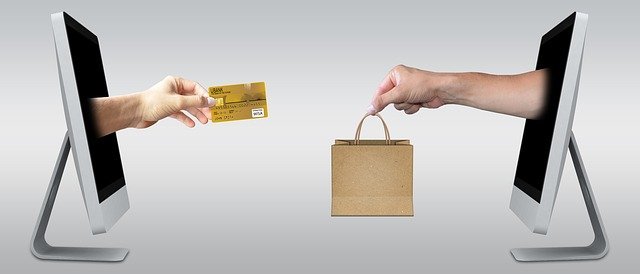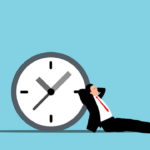
Whether you love or despise Amazon, you must admit that the company is extremely successful in getting consumers to buy things.
In recent years, the e-commerce behemoth has ridden a simple platform, eye-catching deals, and deeply discounted goods to a $1.6 trillion market capitalization.
And Amazon Prime, which began operations in 2005, is a major reason why consumers spend so much money on the site. Reports indicate that there are more than 100 million Prime members or about 63% of all U.S. households.
The service costs $99 per year, which some might say is not worth it for some free two-day shipping and extras like music streaming and photo storage space.
Prime Now is a grocery delivery service that offers one-hour delivery in Manhattan for $7.99 per order and two-day shipping on most of its goods, giving it an edge over competitors like Walmart and Target. And it’s extremely popular: The platform has 200 million users, including 150 million in the United States, according to market research firm CIRP.
So why is Amazon Prime so successful? Why do people spend more than $100 a year on the service when they could buy most of these items elsewhere for less money?
A handful of social psychologists and other researchers have some answers.
Convenience
“We have this thing in our brain called a hedonic treadmill,” said Dan Ariely, a professor of psychology and behavioral economics at Duke University.
“The idea is that we get used to things very quickly… So if you get something new, it feels good but then it doesn’t feel so good anymore.”
Ariely told Business Insider that he uses Amazon Prime for shipping clothes and books, even though he could get them at a discount elsewhere. “It’s just more convenient,” he said of the site.
“You click one button, boom your product is there.”
Ariely added that it’s so easy to buy goods on Amazon Prime that customers don’t realize how much they’re spending. “We found that if you ask people how much money they would spend on an Amazon Prime membership, they will say, ‘$99.’
But if you show them their bill at the end of the year, it is usually more than $100,” he said.
Ariely doesn’t believe Amazon Prime members are consciously trying to spend more money. Rather, he thinks they’re so used to the convenience of Amazon that they don’t realize how much they’re spending.
Social pressure
The website Global gives customers a chance to spread positivity by giving compliments and encouraging others through purchases on Amazon Prime.
“Studies have shown that people are positively affected when others see that they’re doing good things,” said Ariely. “So if [Global is] saying, ‘Hey you can do something nice and feel good about it’ – that’s a win-win.”
Ariely thinks that this encouragement plays into the positive reinforcement we all want to receive from those around us. So if you’re buying something on Amazon Prime, your friend might infer that it’s a good product “and then we start liking it,” Ariely said.
Amazon Prime may also benefit from society’s inherent desire to fit in and not be considered different than others.
“Some people say there is a social stigma attached,” said Ariely. “I don’t know if it’s a stigma, but there might be a negative association… So people say ‘Well, I won’t do that because people will think bad about me.'”
Ariely thinks the group mentality may stem from elementary school. When you’re in third grade and everyone is doing something, you’re more likely to do it too because you don’t want to be different, he said.
After receiving some pushback for this article on Twitter, Business Insider CEO Henry Blodget suggested that I mention Amazon Prime’s video streaming service, which gives subscribers access to movies and TV shows.
“Amazon is brilliant at creating ‘stickiness’ so people use its other services,” Blodget said.
While Amazon certainly wants to attract more Prime members, Ariely told Business Insider that it’s possible the company doesn’t even really care if customers take advantage of every single benefit associated with Amazon Prime.
They may just want people to be exposed to the site. “It’s like Netflix,” he said. “The more people see it, the more likely they are to use it.”
- See also: The Psychology Behind Why Melancholy Songs Make Us Feel Good
- See also: The Psychology of Hope: How to Create Optimism and a Better Future
Incentives
For those who have been on the fence about getting Prime, Amazon has created several promotions to encourage more customers. In some instances, people can receive a free trial of Prime for 30 days.
In others, shoppers only have to pay $1 for shipping on their first purchase through Amazon.
“They’re doing things that don’t cost them much, but get you used to the site,” said Ariely. “I think that’s how they work.”
A little over a year ago, Amazon raised its Prime membership fee from $79 to $99. At the time, Ariely thought that many people would cancel their memberships in response, but he was surprised to see that the number of Prime memberships only went up. “I actually think it was a genius move,” he said because people have been so accustomed to paying $99 for Prime it wasn’t really a price hike.
Incentives are another way Amazon encourages more customers to sign up for Prime. In some cases, shoppers get discounts on products, like when Amazon offers 20% off select video games for Prime members.
“They’re trying to influence us in different ways,” said Ariely. “The more you do it, the less aware of that you are.”
Amazon has also strategically placed some items on their site to make people feel like they need to take advantage of a sale or promotion.
For example, there’s a section on Amazon for discounted products that have only been marked down slightly from the original price.
Conclusion
“It’s not like this is evil,” said Ariely. “I don’t think Jeff Bezos and his team are sitting there saying ‘How can we exploit our customers?’ They’re probably sitting there thinking, ‘What can we do to make people happy?'”
That being said, Amazon makes it clear that they want as many Prime members as possible because it directly benefits the company.
“They’re trying to do a lot of things, but one thing is increasing the number of members,” said Ariely. “And that’s why I think raising prices was genius.”
Incentivizing shoppers through lower prices and discounts makes them feel good about buying from Amazon, while simultaneously encouraging them to sign up for Prime.
But, instead of calling the program “a better way to shop,” Ariely thinks it would be more appropriate to call Amazon Prime “a better way to monetize customers.”



